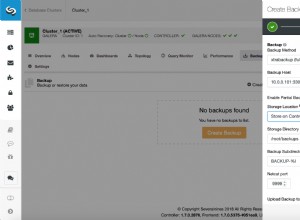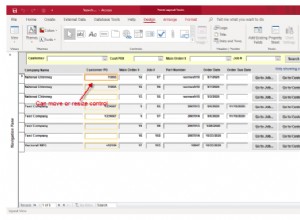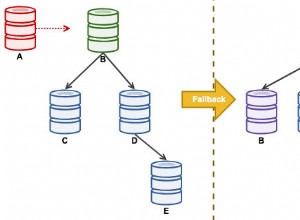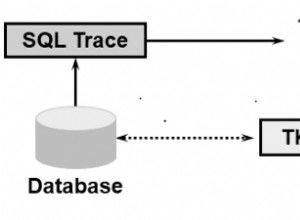Eu usaria esse procedimento armazenado para gerar os intervalos necessários na tabela temporária chamada time_intervals , JOIN e agregue sua tabela de dados com os time_intervals temporários tabela.
O procedimento pode gerar intervalos de todos os tipos diferentes que você vê especificados nele:
call make_intervals('2009-01-01 00:00:00','2009-01-10 00:00:00',1,'DAY')
.
select * from time_intervals
.
interval_start interval_end
------------------- -------------------
2009-01-01 00:00:00 2009-01-01 23:59:59
2009-01-02 00:00:00 2009-01-02 23:59:59
2009-01-03 00:00:00 2009-01-03 23:59:59
2009-01-04 00:00:00 2009-01-04 23:59:59
2009-01-05 00:00:00 2009-01-05 23:59:59
2009-01-06 00:00:00 2009-01-06 23:59:59
2009-01-07 00:00:00 2009-01-07 23:59:59
2009-01-08 00:00:00 2009-01-08 23:59:59
2009-01-09 00:00:00 2009-01-09 23:59:59
.
call make_intervals('2009-01-01 00:00:00','2009-01-01 02:00:00',10,'MINUTE')
.
select * from time_intervals
.
interval_start interval_end
------------------- -------------------
2009-01-01 00:00:00 2009-01-01 00:09:59
2009-01-01 00:10:00 2009-01-01 00:19:59
2009-01-01 00:20:00 2009-01-01 00:29:59
2009-01-01 00:30:00 2009-01-01 00:39:59
2009-01-01 00:40:00 2009-01-01 00:49:59
2009-01-01 00:50:00 2009-01-01 00:59:59
2009-01-01 01:00:00 2009-01-01 01:09:59
2009-01-01 01:10:00 2009-01-01 01:19:59
2009-01-01 01:20:00 2009-01-01 01:29:59
2009-01-01 01:30:00 2009-01-01 01:39:59
2009-01-01 01:40:00 2009-01-01 01:49:59
2009-01-01 01:50:00 2009-01-01 01:59:59
.
I specified an interval_start and interval_end so you can aggregate the
data timestamps with a "between interval_start and interval_end" type of JOIN.
.
Code for the proc:
.
-- drop procedure make_intervals
.
CREATE PROCEDURE make_intervals(startdate timestamp, enddate timestamp, intval integer, unitval varchar(10))
BEGIN
-- *************************************************************************
-- Procedure: make_intervals()
-- Author: Ron Savage
-- Date: 02/03/2009
--
-- Description:
-- This procedure creates a temporary table named time_intervals with the
-- interval_start and interval_end fields specifed from the startdate and
-- enddate arguments, at intervals of intval (unitval) size.
-- *************************************************************************
declare thisDate timestamp;
declare nextDate timestamp;
set thisDate = startdate;
-- *************************************************************************
-- Drop / create the temp table
-- *************************************************************************
drop temporary table if exists time_intervals;
create temporary table if not exists time_intervals
(
interval_start timestamp,
interval_end timestamp
);
-- *************************************************************************
-- Loop through the startdate adding each intval interval until enddate
-- *************************************************************************
repeat
select
case unitval
when 'MICROSECOND' then timestampadd(MICROSECOND, intval, thisDate)
when 'SECOND' then timestampadd(SECOND, intval, thisDate)
when 'MINUTE' then timestampadd(MINUTE, intval, thisDate)
when 'HOUR' then timestampadd(HOUR, intval, thisDate)
when 'DAY' then timestampadd(DAY, intval, thisDate)
when 'WEEK' then timestampadd(WEEK, intval, thisDate)
when 'MONTH' then timestampadd(MONTH, intval, thisDate)
when 'QUARTER' then timestampadd(QUARTER, intval, thisDate)
when 'YEAR' then timestampadd(YEAR, intval, thisDate)
end into nextDate;
insert into time_intervals select thisDate, timestampadd(MICROSECOND, -1, nextDate);
set thisDate = nextDate;
until thisDate >= enddate
end repeat;
END;
Cenário de dados de exemplo semelhante na parte inferior de esta postagem , onde criei uma função semelhante para o SQL Server.




